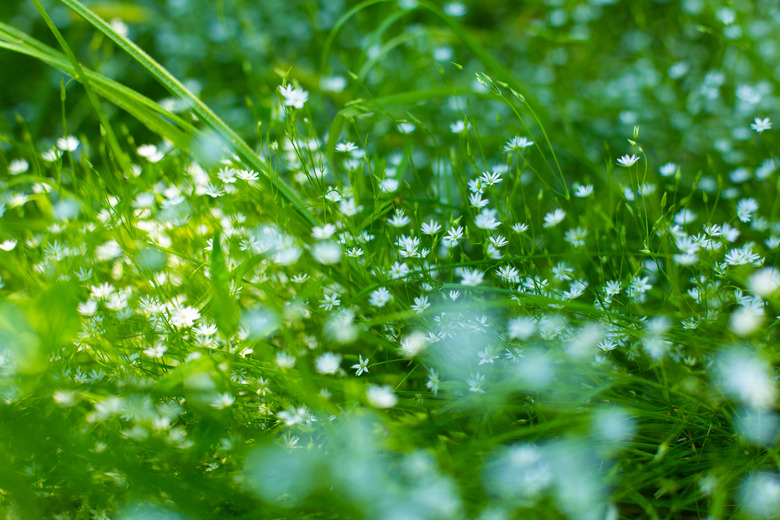How To Fix A Lawn That Is Overrun With Weeds And Crabgrass
We may receive a commission on purchases made from links.
Once your lawn is overrun with weeds and crabgrass (Digitaria spp.), it's usually easiest to start fresh with new grass seeds or sod after you kill all of the crabgrass weeds. Finding the right type of herbicide to kill the weeds effectively is an important first step. The entire process can take weeks, but the reward is a beautifully lush lawn that's free of weeds and crabgrass.
Assess Weeds and Crabgrass
Assess Weeds and Crabgrass
Evaluate your lawn to determine if it's overrun with weeds and crabgrass or if the problem is smaller than you think. A few patches of weeds can be treated with herbicides or through manual removal. If the weeds are truly taking over most of the yard, the renovation process will leave your yard looking brown and dead for several weeks, but it will come back stronger in the end.
Pre-emergent vs. Post-emergent Herbicides
Pre-emergent vs. Post-emergent Herbicides
Selective herbicides designed to attack the specific type of weeds in your yard are the easiest way to get rid of the unwanted growth quickly. Broadleaf weeds include things such as dandelions and clover. Grasslike weeds have hollow leaves and include wild onion and wild garlic. Grassy weeds include crabgrass, foxtail and annual bluegrass. Determine which types of weeds you have in addition to crabgrass to choose the right herbicide.
You can also apply a nonselective herbicide, but only if you want to kill the grass as well. If your lawn is mostly weeds, this is the fastest way to get rid of everything so you can restart your lawn.
Pre-emergent herbicides prevent the weeds from growing in the spring by inhibiting the growth of roots or shoots on the seedlings. Generally, they're effective for eight to 12 weeks. A post-emergent herbicide is what you need if the weeds are already growing. Even if the herbicide is designed to target a specific type of weed, it may still kill other plants, including what little grass you have left, so always use an herbicide according to the product label and test a small area before applying it to your entire lawn. If your yard is mostly weeds anyway, killing everything and starting from scratch isn't a bad thing.
Applying Herbicides to the Lawn
Applying Herbicides to the Lawn
Follow all herbicide instructions exactly to safely apply the chemicals. That includes using the proper application rates and mixing the ingredients in the order listed in the instructions. Choose a calm day since any wind can blow the herbicide into other areas and kill plants you want to keep. Cover as much skin as possible with clothes and wear a respirator mask and safety goggles to protect yourself from the chemicals.
Preparing to Plant New Grass
Preparing to Plant New Grass
You can't plant your grass seed immediately after using an herbicide, as it may prevent the seeds from growing. Check the herbicide instructions to see how long you need to wait before regrowing your lawn. You might have to wait up to four weeks or longer.
If the soil is compacted, aerate the lawn first. Rake the yard to loosen the soil and prep it for grass seed. A tiller can also help prepare the soil. You might need to amend the soil to make it suitable for grass seed.
Plant Grass Seed or Sod
Plant Grass Seed or Sod
If you're growing grass from seed, use a broadcast spreader to apply the seeds over large areas. Rake the yard lightly to help cover the seeds or sprinkle a light layer of soil over the seeds. Water twice daily to keep the soil consistently moist until the grass seeds germinate.
If you don't want to wait for grass seeds to grow, you can lay sod for an instantly green yard. You need to prep the soil in a similar way as you do for grass seed. Roll out the sod, starting next to the longest paved area or structure in your lawn. Continue laying rolls, placing the sod right next to the last piece, and cut the sod to fit around structures in the yard. Water your sod once daily for the first week.
